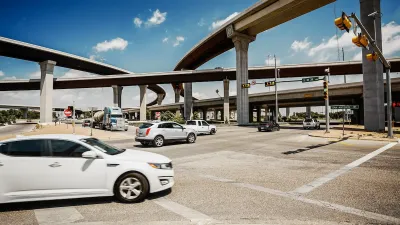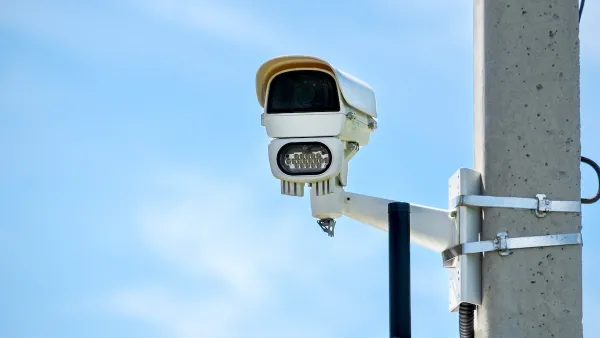Safety improvements at major intersections led to a 22 percent reduction in deaths and severe injuries and saved the city over $28 million.

Austin’s Vision Zero initiative is saving lives, according to a city report, with fatalities and serious injuries down by 22 percent at major intersections that received safety improvements, reports Haley McLeod in Community Impact.
The city made improvements at 27 major intersections since 2016, adding protective arrows and flashing lights for left turns, increasing crosswalk visibility, adding bicycle detection and signage, adjusting clearance time for red and yellow lights, and adding flashing warning signals.
McLeod notes that there is still work to be done. “The average of fatal or serious crashes is down from previous years, but there were eight intersections that saw an increase.” At one intersection where drivers tend to run red lights, the city is making ‘geometric changes’ to the streetscape to slow down turning vehicles and adding concrete pedestrian islands.
From a financial perspective, the Vision Zero program essentially pay sofr itself: “With a nearly 20% decrease in total crashes seen at major intersections in Austin, there was an annual comprehensive cost of crash savings of over $28 million. Per the report, the construction of safety improvements for all 22 intersections cost $18.5 million.”
FULL STORY: Vision Zero initiative saves lives and $28M in Austin, per report

National Parks Layoffs Will Cause Communities to Lose Billions
Thousands of essential park workers were laid off this week, just before the busy spring break season.

Retro-silient?: America’s First “Eco-burb,” The Woodlands Turns 50
A master-planned community north of Houston offers lessons on green infrastructure and resilient design, but falls short of its founder’s lofty affordability and walkability goals.

Delivering for America Plan Will Downgrade Mail Service in at Least 49.5 Percent of Zip Codes
Republican and Democrat lawmakers criticize the plan for its disproportionate negative impact on rural communities.

Test News Post 1
This is a summary

Test News Headline 46
Test for the image on the front page.

Balancing Bombs and Butterflies: How the National Guard Protects a Rare Species
The National Guard at Fort Indiantown Gap uses GIS technology and land management strategies to balance military training with conservation efforts, ensuring the survival of the rare eastern regal fritillary butterfly.
Urban Design for Planners 1: Software Tools
This six-course series explores essential urban design concepts using open source software and equips planners with the tools they need to participate fully in the urban design process.
Planning for Universal Design
Learn the tools for implementing Universal Design in planning regulations.
EMC Planning Group, Inc.
Planetizen
Planetizen
Mpact (formerly Rail~Volution)
Great Falls Development Authority, Inc.
HUDs Office of Policy Development and Research
NYU Wagner Graduate School of Public Service





























